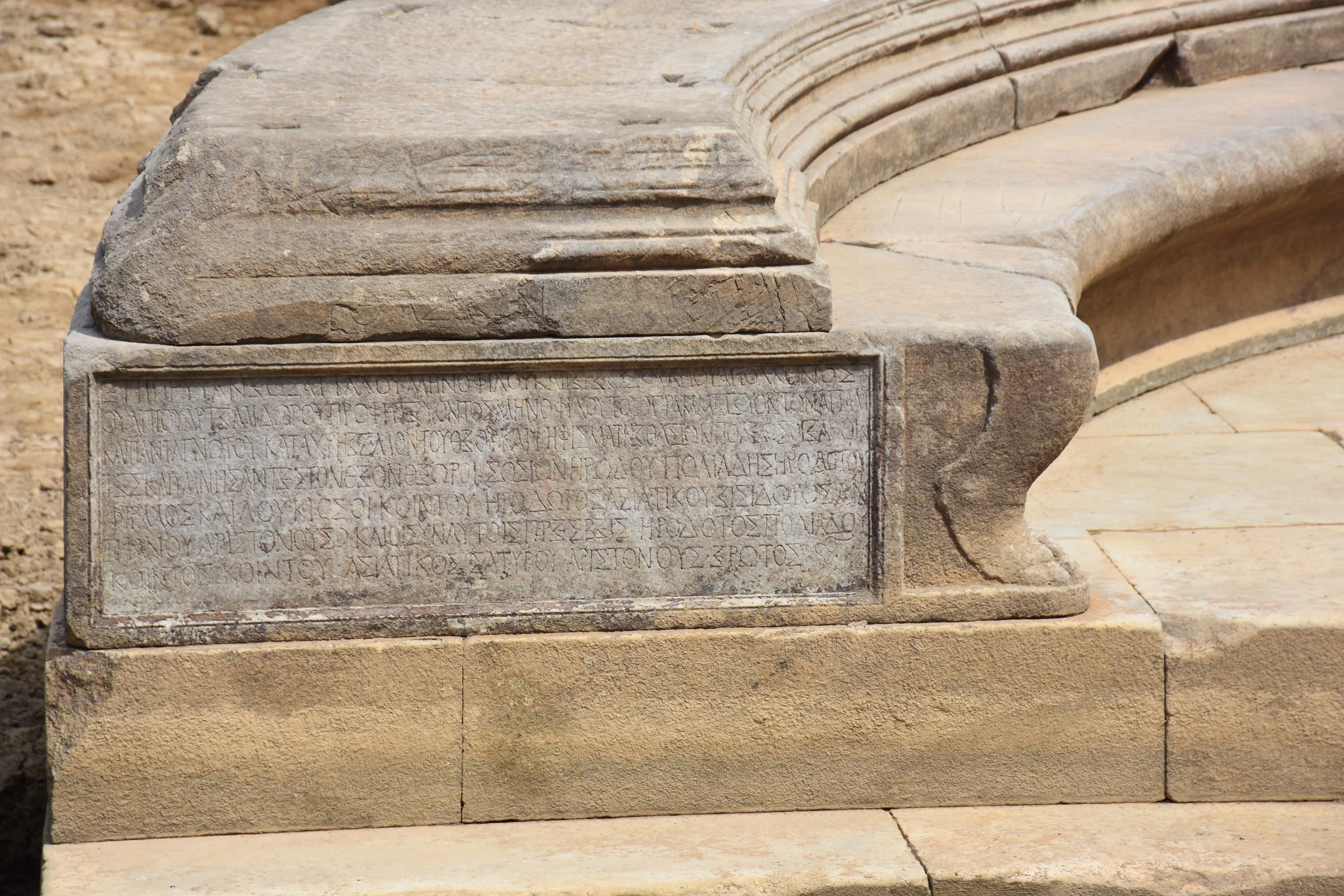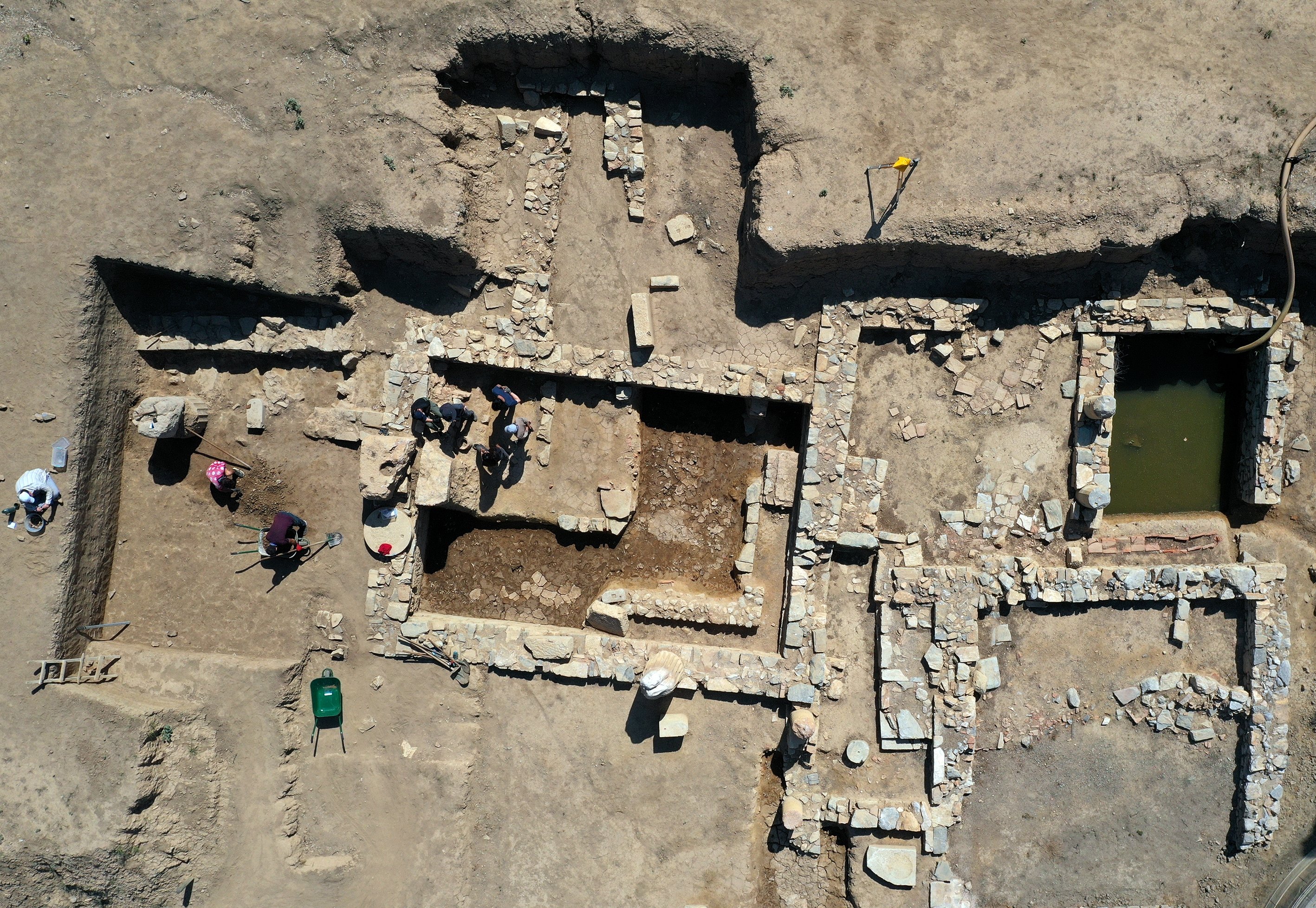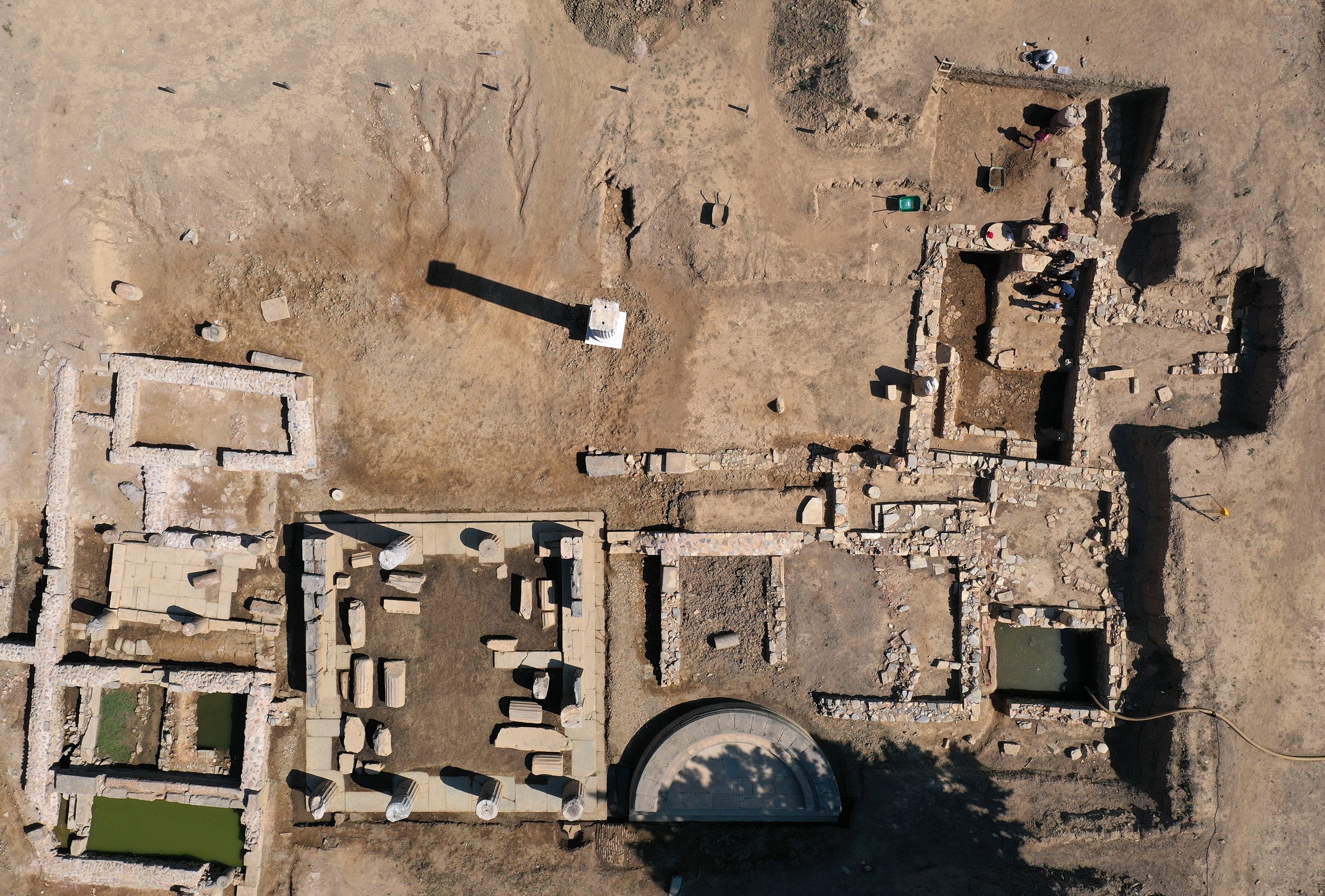In the ancient Greek sanctuary of Claros on the southwestern shores of Türkiye’s Izmir, one of the most important pagan sacred places of Ionia, game boards and forked cross motifs belonging to the fifth-seventh century A.D. have been found. The new discoveries prove that Claros, which is said to have been abandoned after the spread of Christianity, actually preserved its function for many years.
According to historians and archaeologists, Claros was one of the three prophecy centers, along with Delphi and Didyma, in modern-day Greece. It was believed that the mythological god Apollo was in charge of divination in Claros. Therefore, statues depicting him and his mother, Leto, and his twin sister, Artemis, have been found in Claros.
Claros was believed to be a center of paganism until the fourth century, when Christianity began to spread. “We thought that the ancient city continued to attract visitors until the fourth century; however, it gradually lost its charms once Christianity began to spread in the region,” informed Onur Zuhal of Ege University Faculty of Letters, who serves as a consultant to the excavations in Claros.
But in the new period excavations in Claros, which dates back to the 13th century B.C., traces belonging to the fifth to the seventh century B.C. have been found. As a result of archaeological research, nine stone game boards and forked cross motifs engraved under a Doric head of the Hellenistic Temple of Apollo as well as ceramic finds, have been unearthed. These finds support the claim that the sanctuary, which was thought to have been abandoned or emptied by the Roman Empire since 380 A.D. when Christianity was accepted as the official religion as it symbolized the pagan faith, was actually inhabited or visited for a longer period of time.

Stating that important decisions such as wars and city establishment in ancient times were made after the approval in the prophecy center, Zunal said: “Claros is one of the most important sites of the ancient period. Our recent work here showed us that the sanctuary continued to be used even after the declaration of Christianity as the official religion of Claros in 380 A.D. We discovered that it did not lose its charm in the fourth century and continued to be used until seventh century A.D., taking into account the current findings.”
Zunal also stated that articles on the studies that took the history of the sanctuary forward about 300 years were published in national and international journals.
Emphasizing that the “sacred space” function of Claros continued despite the conversion to Christianity, Zunal said: “There are still people who visit this place. There are many people who believe in the energy of Claros. We have also witnessed that people who believe in Apollo come here at certain times and perform certain rituals. Therefore, in fact, it would even be wrong to say that the city was abandoned in the seventh century A.D. Even in the 2020s, people who believe in Claros somehow come here and do their own rituals.”
The Daily Sabah Newsletter
Keep up to date with what’s happening in Turkey, it’s region and the world.
You can unsubscribe at any time. By signing up you are agreeing to our Terms of Use and Privacy Policy. This site is protected by reCAPTCHA and the Google Privacy Policy and Terms of Service apply.





